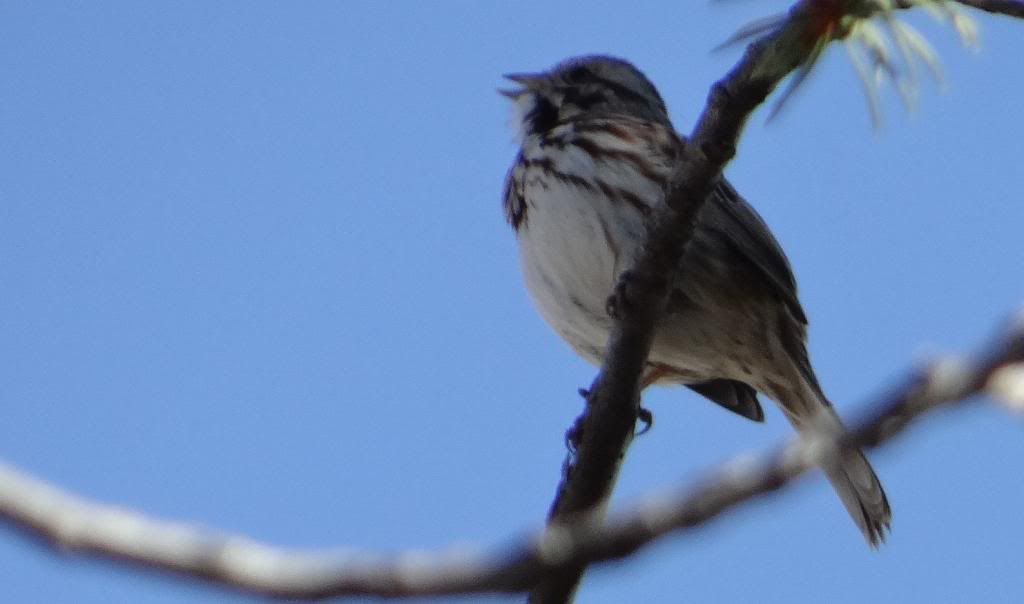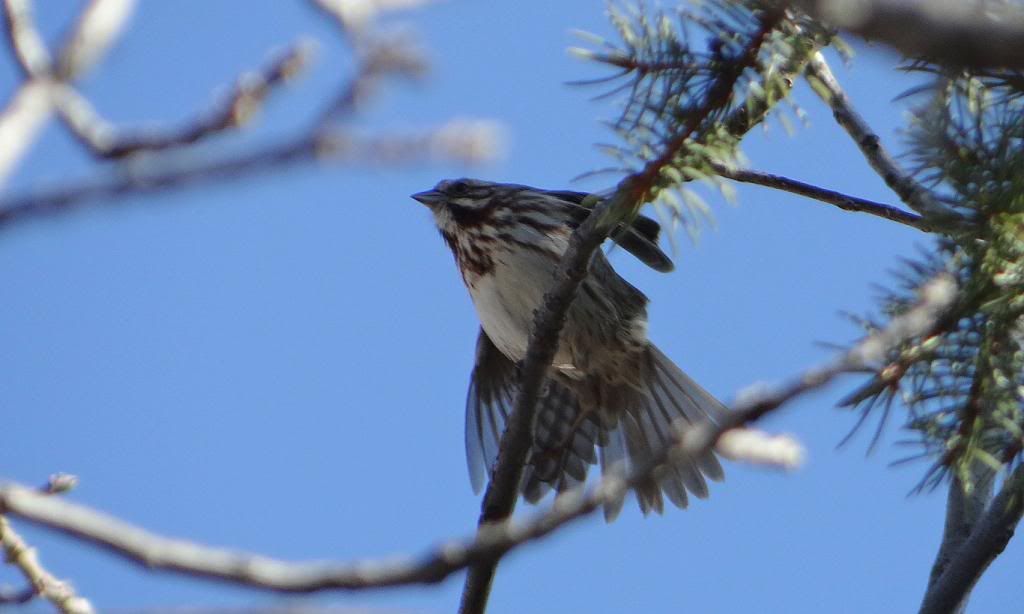Another rare chance to be able to post to LJ…I really do NOT know why I’m not giving up…just cussedness, I think. My dear friends…I can’t read your posts any more, most of the time…I can’t even post to my own LJ….I can’t reply to your comments (though I can see them most of the time)…Oh well, I’ll continue as long as I can.
This morning, I went to drop Boodi Ma at her day care, and walked back in the cold, crisp weather…and looked up when I heard the song. Well, actually, the Song. For it was the
SONG SPARROW:

here is the Wiki info
about the Song Sparrow.

What a wonderful thing it is, when a creature has “song” as a part of both its common and scientific name (Melospiza melodia)! Indeed, its melodious song is lovely to hear, especially in the crisp, clear, cold air.
The wiki says, about the song…
The male of this species uses its melodious and fairly complex song to declare ownership of its territory and to attract females.
The Song Sparrow's song consists of a combination of repeated notes, quickly passing isolated notes, and trills. The songs are very crisp, clear, and precise, making them easily distinguishable by human ears. A particular song is determined not only by pitch and rhythm but also by the timbre of the trills. Although one bird will know many songs—as many as 20 different tunes with as many as 1000 improvised variations on the basic theme, unlike thrushes, the Song Sparrow usually repeats the same song many times before switching to a different song.
Song Sparrows typically learn their songs from a handful of other birds that have neighboring territories. They are most likely to learn songs that are shared in common between these neighbors. Ultimately, they will choose a territory close to or replacing the birds that they have learned from. This allows the Song Sparrows to address their neighbors with songs shared in common with those neighbors. It has been demonstrated that Song Sparrows are able to distinguish neighbors from strangers on the basis of song, and also that females are able to distinguish (and prefer) their mate's songs from those of other neighboring birds, and they prefer songs of neighboring birds to those of strangers.
Other birds such as mockingbirds are not able to effectively imitate the Song Sparrow's song.
I’m amazed that the Mockingbird is not able to imitate this bird’s song…I have heard them imitating SO many birdsongs!
The song made my morning a happy one, and I returned home with a song in my heart, too!


